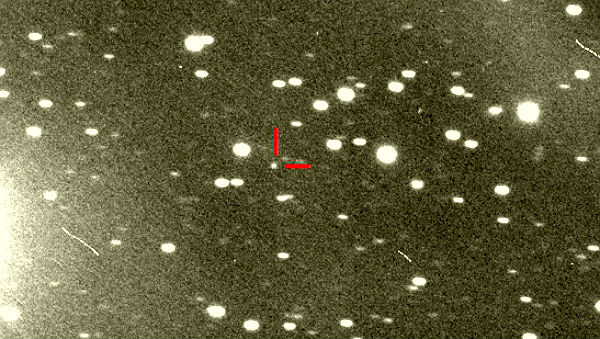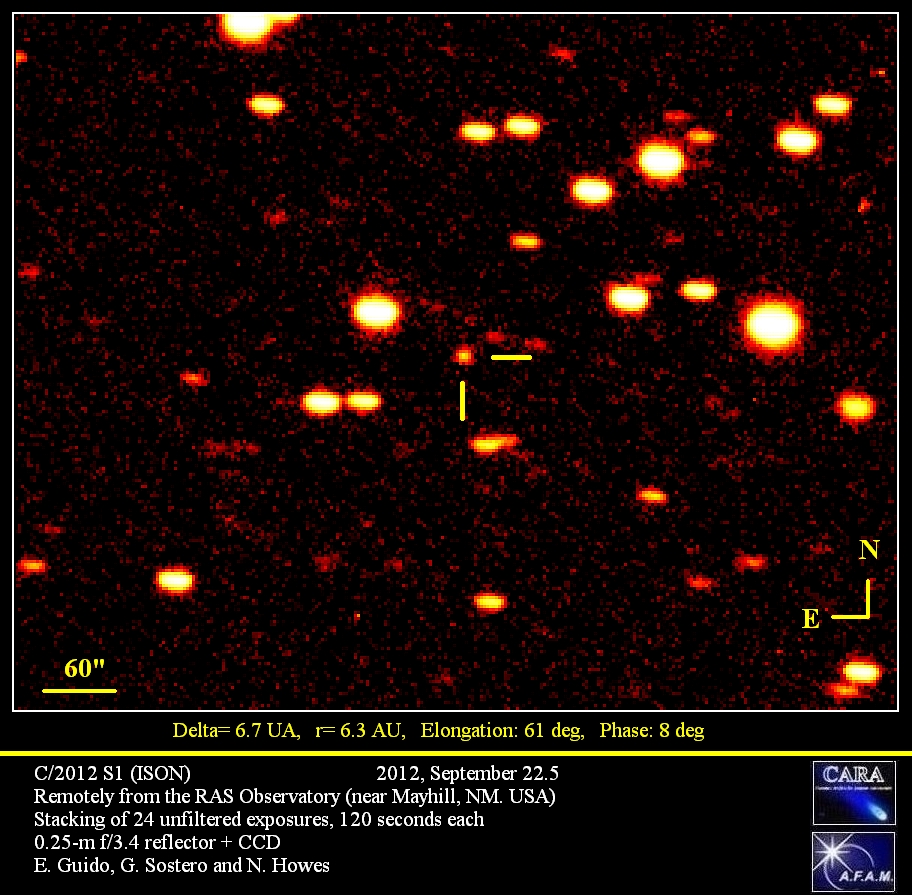Newly-discovered Comet C/2012 S1 (ISON) will pass extremely close to the Sun next year

Vitali Nevski (Belarus) and Artyom Novichonok (Russia) on CCD images obtained on September 21, 2012 discovered new sundiving comet with a 0.4-m f/3 Santel reflector of the International Scientific Optical Network (ISON) near Kislovodsk, Russia. The new comet has been designated C/2012 S1 (ISON). The discovery was announced on September 24, 201 as comet reached magnitude 18.8.
Comet C/2012 S1 (ISON) is currently located beyond the orbit of Jupiter. At the end of November 2013, it will pass less than 0.012 AU (1.8 million km) from the solar surface, which is extremely close. The proximity of solar heating could turn the comet into a bright naked-eye object. A 'new' comet coming in from the Oort cloud, meaning this could be its first-ever encounter with the Sun. If it survives close approach of the Sun, it will be then to ~0.4AU from Earth at the beginning of January 2014!

Comet ISON imaged on September 22, 2012 (Credit: Guido/Sostero/Howes)
Karl Battams of the Sungrazer Comet Project, lays out two possibilities: it could be extremely bright (negative magnitudes maybe) and naked-eye visible for observers in the Northern Hemisphere for at least a couple of months or it could fizzle out – it could well disrupt and dissipate weeks or months before reaching the sun (remember Comet Elenin last year).
Meanwhile, another comet researcher John Bortle has pointed out a curious similarity between the orbit of Comet ISON and that of the Great Comet of 1680. He pointed that perhaps the two bodies could have been one a few revolutions ago. The Great Comet of 1680 had a supposed e of 0.999986 AU.

Orbital diagram of Comet C/2012 S1 (Credit: NASA/JPL)
JPL’s Small Body Database of Comet ISON
Ephermides of the Comet ISON (Minor Planet Center)
Sources: Remanzacco Observatory, Sungrazer Comet Project, SpaceWeather.com
Featured image credit: Remanzacco Observatory

Dr. Gareth Williams assisted me on how he determined the orbit of ISON.
New question: On September 21, 2012, how was distance to our Earth galaxy determined by Russian scientists? I am going banannas trying to figure it out.
Thank you.
Brandon E. Mena, author "Reasonable Evidence" Xlibris
COMET ISON may be the return of the STAR OF BETHLEHEM
the orbit of COMET ISON brings it back every 333 years,
so it can be established that the comet was here in 15 a.d.
considering that an exact year has never been established
for the birth of christ,
is it more than coincidence that
there was a census in 14 a.d. called by Caesar Augustus?
you heard it here first !
http://www.facebook.com/events/371628202915203/